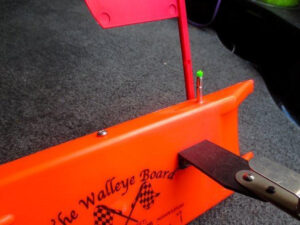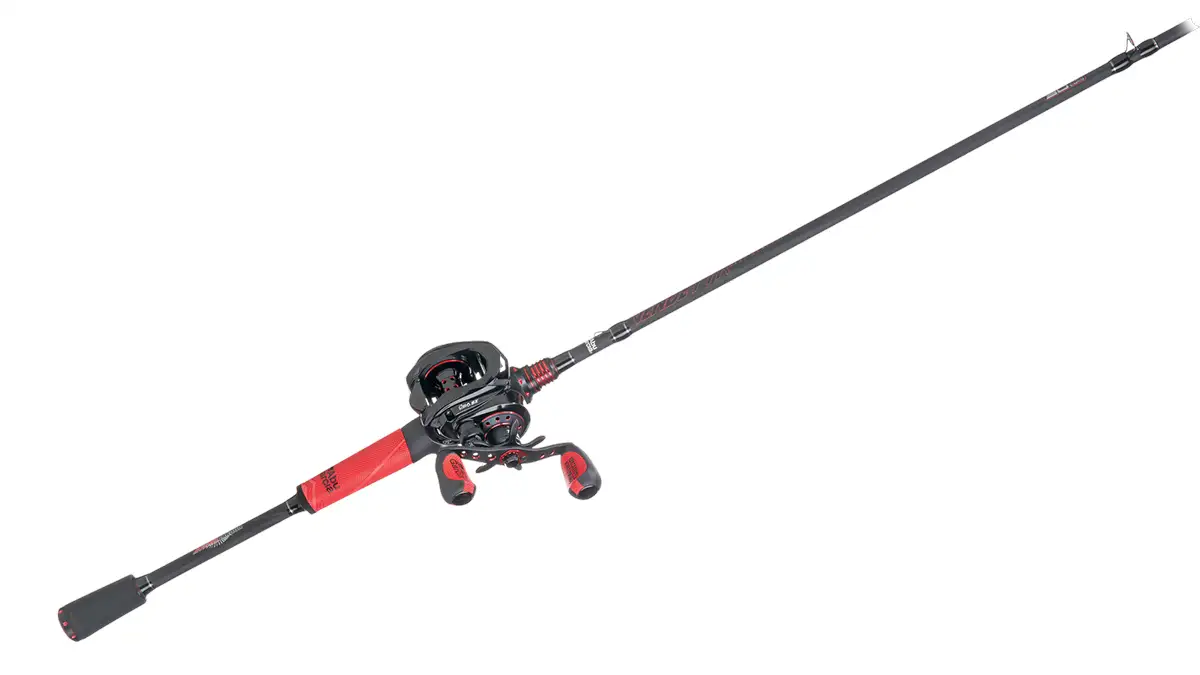When the water dips below 50 degrees on most bodies of water is the best time to start looking at night fishing for walleye. As the lakes begin to cool, focus on bait to find and develop a plan to trick walleyes.
Cool temps generally means everything needs to be slowed down, even if you are trolling. A passerby might think you are rigging, and the pace often feels like being stuck in molasses.
Related read: How to Catch Walleye
4 Locations to find night walleyes
Because the pace can be so slow and walleyes often frequent small areas, anglers find it more important to know which areas work so they don’t see the sunrise before the walleye. While location of walleyes will vary from day to day and lake to lake, below are 4 areas that always seem to play a role. With today’s technology, most of the homework can be done without even seeing the lake. Digital mapping or an old paper map allows you to find all of the productive areas below, except lights.
- Break walls. The manmade structure and added rock or concrete in the water is almost like a main lake reef. The generally shallow water and lights close by make a great congregating place for baitfish and an equally good ambush point for walleyes.
- Shallow reefs. Not a surprise to anyone, shallow reefs can hold a lot of life, especially in the fall. Walleyes seem to prefer shallow reefs that have access to deep water. Look at decent size flats on the windblown side for best results.
- Main shore current breaks. Primarily found on larger bodies of water such as the Great Lakes, these areas can funnel bait as they look to get out of the current and hide in the slightly warmer water. Large pier heads, secondary break walls and even boat launches can be places to look.
- Lights. Lights draw minnows, and minnow draw walleyes. Large flood lights that operate every night prove most consistent, so concentrate in the shadows outside of the lighted area.
In an ideal world it is best to scout out these areas just before dark. If you haven’t been to the area before it may keep you from ripping off a lower unit. Even if you know the lake exceptionally well, it will allow you to determine the water clarity and if a mud line exists. Water clarity will determine how far walleyes will, or can, chase bait and often can help you eliminate water for that night. Don’t be afraid to fish slightly stained water, baitfish love it as a cover and it can also make the walleyes less spooky and not as aware of your presence.
Simplify your equipment
Night fishing walleyes shouldn’t be complicated, actually the exact opposite. Taking the time to eliminate things you don’t need and have everything put away will go a long way to having better efficiency and breaking less gear. If you don’t need it, leave it at home. When you are in the cold and in the dark everything is more difficult than if you were doing it in July in the middle of the day.
- Trolling motor. Perhaps one of the most important parts. An electric trolling motor will keep you on your spot and in a way that the walleyes won’t even know you are there. The Minn-Kota I-Pilot has a feature called spot lock that holds you on a spot at the touch of a button for precise and low maintenance boat control when casting. Using this same trolling motor while trolling allows you to easily steer and make incremental speed adjustments in a low maintenance fashion, all while being quiet.
- Planerboards. Boards allow you to get more lines out and farther from the boat. At night with no way to see them, you need to add some type of light. Most manufactures offer add on part so that they can be seen in order to detect a strike and to keep another boat from driving over them. A simple cyalume stick or bobber light attached to the board works also. I prefer a small bobber light, they are small, easy to store and can be reused. Simply drill a small hole in your board for them to be inserted into.
- Nav. lights. Besides being required by law, they could keep another boat from running you over. I prefer at night to replace the typical three foot or so anchor light with a taller two piece light. This taller alternative will keep the light beam out of your eyes and not wreck your night vision.
- Flashlights. The first thing most guides like myself likes to do on a night trip is go around and collect all of the crews flashlights like a school teacher does cell phones. Constantly turning lights on and off will spook fish, let other boats know what you are doing and ruin your night vision. Instead only use lights when necessary and substitute a black light bulb where able. Another trick is to add red cellophane over flashlights and headlamps to keep from spooking fish and keep the crew from ruining their night vision as well.
Target areas efficiently
The trolling vs. casting discussion on my home waters of Lake Erie can quickly turn into a Hatfield vs. McCoy drama. At night, however, it isn’t one or the other, but often both for efficiency reasons. When fishing large break walls or the edges of long tapering reefs trolling with planerboards is more efficient and can allow you to run in shallower water without spooking them.
Running boards 50 to 100 feet away from the boat at all times is a huge advantage and allows for more lines in the water at the same time. Inversely, if walleyes are positioned on the crown of reefs, this spot on spot situation is typically best to cast. By casting you can repeatedly put your lure in the strike zone instead of taking trolling passes that only will have your lures in the sweet spot for a few seconds.
Choose the best presentations
Those in the know hands down rely on stick baits, whether casting or trolling on most bodies of water. Not to say that lipless or shad shaped lures don’t have their moments. In the summer anglers may use lighted slip bobbers and leeches or other tactics, but in the cool waters of fall a stick bait is primo in the often shallow waters they are targeted and they tend to put out more vibration to allow walleyes to pick up on it from farther away, all while not hanging up. Attempting to remove a snagged lure can all but shut down a good night spot.
Lures such as the Rapala Original Floater, Husky Jerk, Reef Runner Ripstick, and Smithwick Rogue are staples that can be found on the rods of veteran night fisherman across the country. More important than telling you what to use, look at things such as when to use rattles or not, or chrome vs. painted. discussion points that could be debated for weeks, but they are factors that need to be observed. Unfortunately these things can only be learned by trial and error and from night to night.
As important as having the ‘hot’ stick bait tied on is making sure you have razor sharp hooks and that the lures are in tune. It is very difficult to tune a lure in the dark and not having sharp hooks doesn’t help anyone but the fish. Make sure both of these tasks are done long before you hit the water.
Night time is the right time for a big fish or to just get bit on a tough lake as long as you have a plan.















